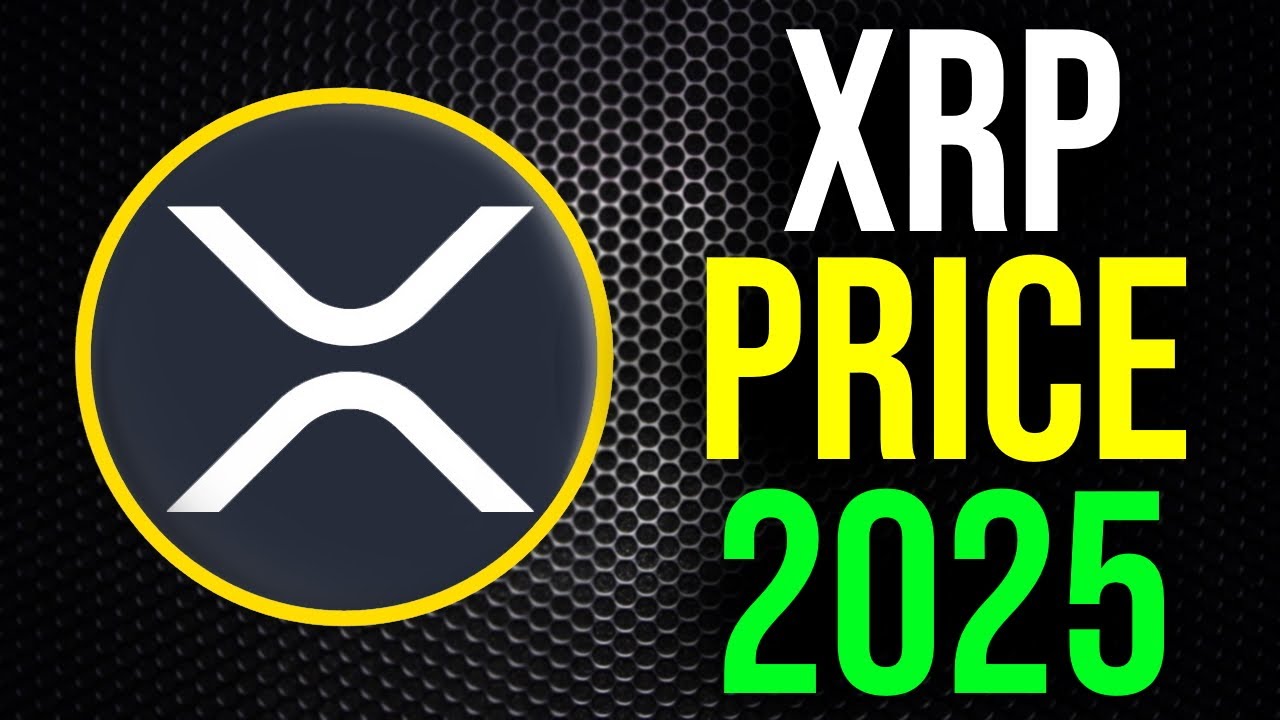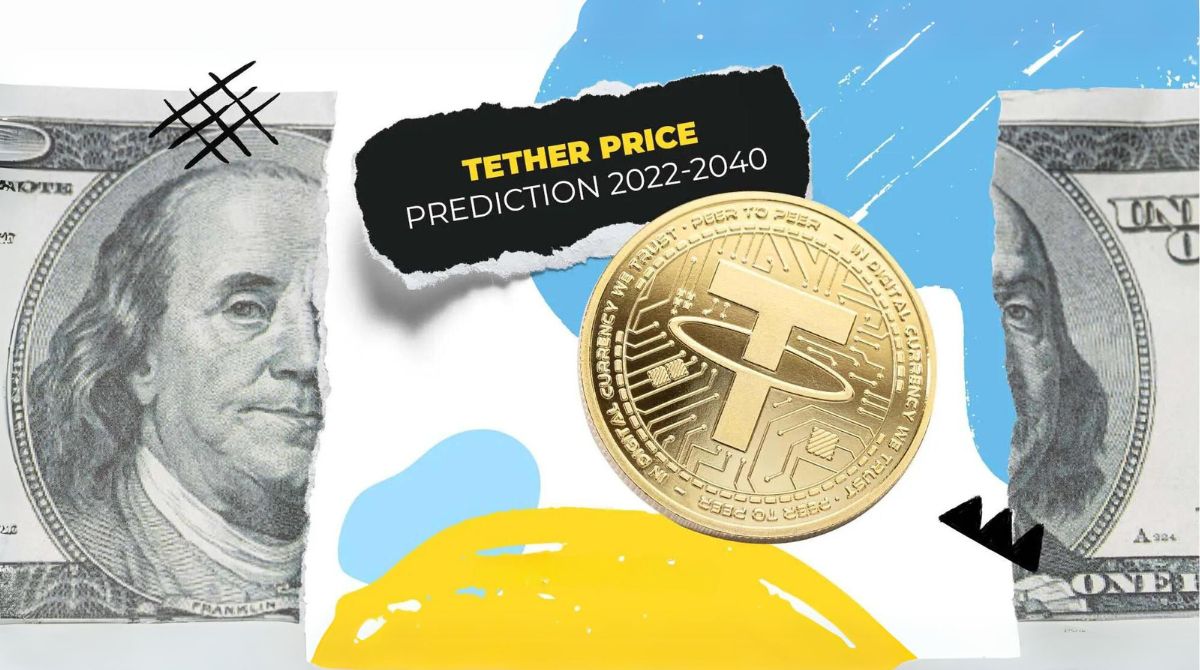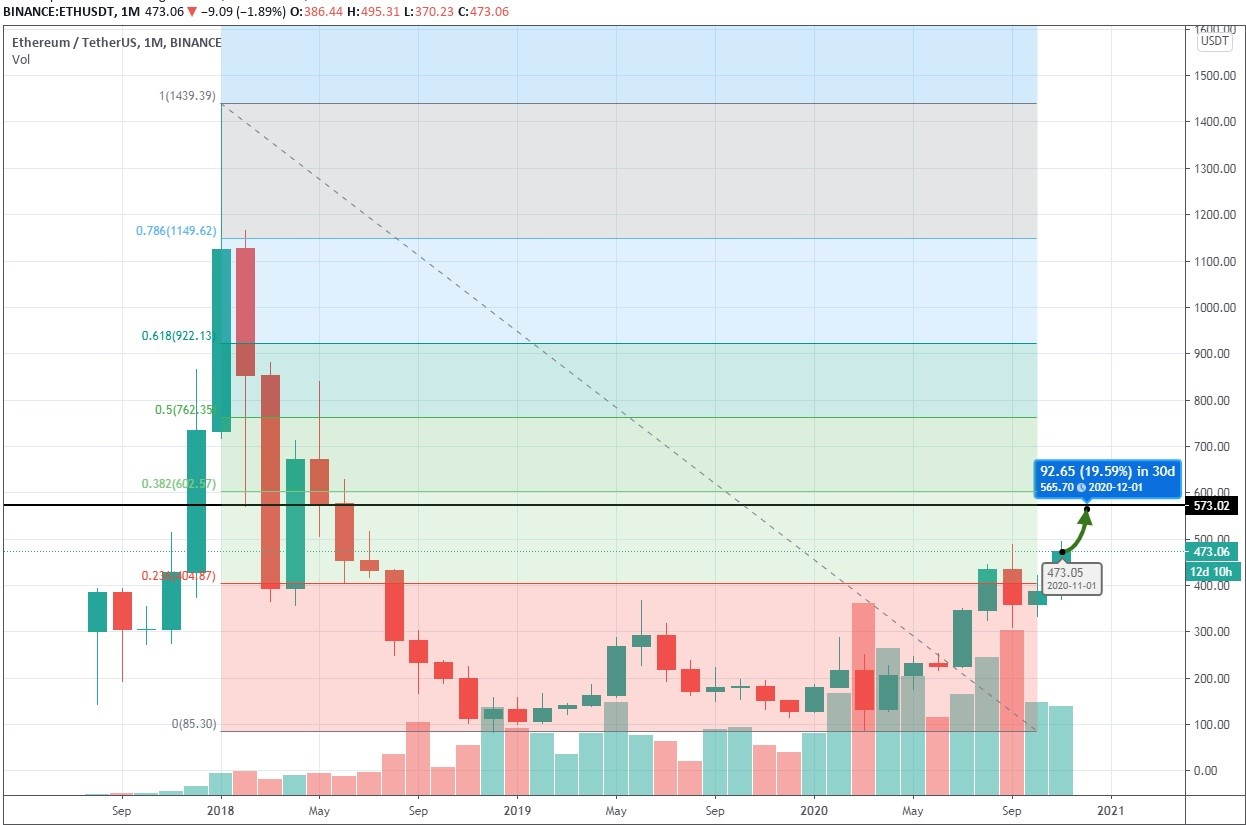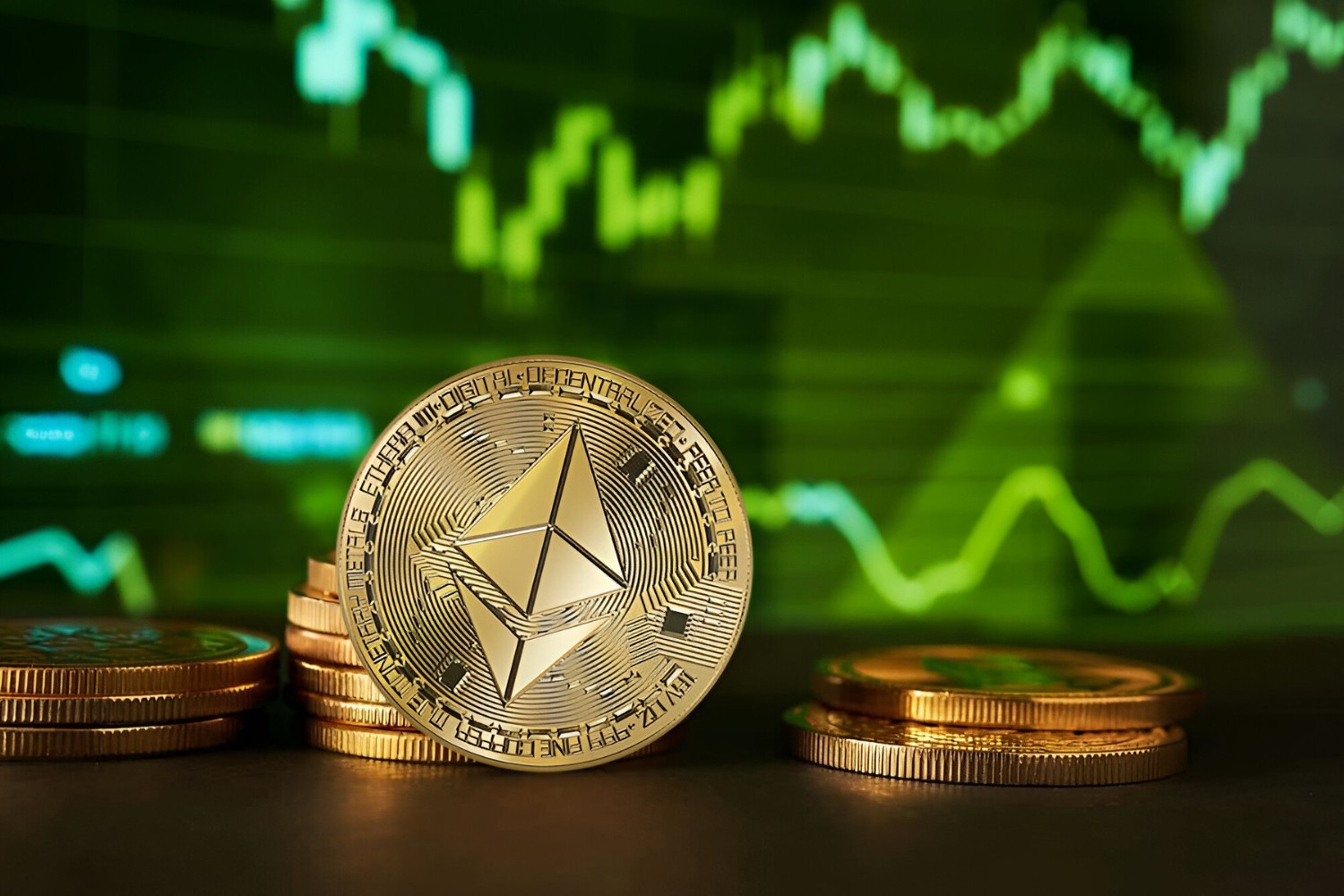Introduction
Ripple, a blockchain-based digital currency and payment protocol, has gained significant attention in the world of cryptocurrencies. As one of the top cryptocurrencies in terms of market capitalization, Ripple has made a name for itself with its unique approach to cross-border transactions and its partnerships with major financial institutions.
Launched in 2012 by Chris Larsen and Jed McCaleb, Ripple aims to revolutionize the traditional banking system by providing a faster and more cost-effective solution for global payments. Unlike other digital currencies, Ripple is not mined and its tokens, known as XRP, were pre-mined, with a total supply of 100 billion. This supply has raised questions and speculation about its intrinsic value and future worth.
Given the unprecedented growth and volatility of the cryptocurrency market, it’s natural to wonder what Ripple’s value will be in the future, specifically in 2025. In this article, we will explore the various factors that could impact Ripple’s price, examine the perspectives of industry experts, and outline potential scenarios for its value.
It’s important to note that predicting the value of cryptocurrencies, including Ripple, is highly speculative and influenced by a range of factors, many of which are beyond our control. The intention of this article is to provide an objective analysis of the current landscape and potential outcomes, rather than provide definitive predictions.
Now, let’s delve into the factors that may influence Ripple’s price in the coming years.
Ripple: A Brief Overview
Ripple, often referred to as RippleNet, is a cryptocurrency and payment protocol that aims to enable fast and cost-effective cross-border transactions. It was designed to address the inefficiencies of the traditional banking system by utilizing blockchain technology and a consensus algorithm that doesn’t require mining.
Unlike Bitcoin and many other cryptocurrencies, Ripple’s cryptocurrency, XRP, is not mined. Instead, all 100 billion XRP tokens were pre-mined when the network was launched. Ripple’s primary focus is on facilitating seamless and instant transfers of money between financial institutions, with the goal of eliminating the need for intermediaries like banks or clearinghouses.
One of the key features of Ripple is its use of a distributed ledger technology called the XRP Ledger. This decentralized network serves as the foundation for Ripple’s payment protocol, enabling transactions to be recorded and verified in a secure and transparent manner. The XRP Ledger can handle up to 1,500 transactions per second, significantly faster than traditional banking systems.
Ripple’s unique selling point lies in its ability to settle transactions in different currencies, including fiat currencies, cryptocurrencies, and even commodities. It achieves this through its liquidity solution, known as xRapid, which utilizes XRP as a bridge currency. By facilitating real-time currency exchanges, Ripple aims to reduce capital tied up in international transfers and minimize liquidity costs for financial institutions.
Another noteworthy aspect of Ripple is its strategic partnerships with major financial institutions around the world. Notable partners include Santander, American Express, Standard Chartered, and MoneyGram, among others. These partnerships not only serve as an endorsement of Ripple’s technology, but also provide access to a vast network of potential users, increasing the likelihood of widespread adoption.
In summary, Ripple is a cryptocurrency and payment protocol that aims to transform the traditional banking system by enabling fast and cost-effective cross-border transactions. With its focus on facilitating instant transfers between financial institutions and its innovative use of XRP as a bridge currency, Ripple has gained significant attention and partnerships within the industry.
Factors Influencing Ripple’s Price
The price of Ripple, like any other cryptocurrency, is influenced by a variety of factors. Understanding these factors can provide insights into the potential future price movements of Ripple. Here are some key factors that can impact Ripple’s price:
- 1. Adoption by Financial Institutions: Ripple’s success depends heavily on its adoption by financial institutions globally. As more banks and payment providers integrate Ripple’s technology into their operations, the demand for XRP is likely to increase, potentially driving up its price.
- 2. Regulatory Developments: The cryptocurrency industry is subject to regulatory scrutiny and developments. Changes in regulations and government policies can significantly impact the demand for and perceived value of Ripple. Favorable regulatory decisions could lead to increased trust and adoption, positively impacting Ripple’s price.
- 3. Market Demand and Supply: The basic principle of supply and demand applies to cryptocurrencies as well. If the demand for Ripple exceeds the available supply, its price is likely to rise. Conversely, if the supply of Ripple outweighs the demand, its price may decline.
- 4. Technological Advancements: Ripple’s success is closely tied to its ability to continuously improve and innovate its technology. Upgrades and advancements in the Ripple protocol could enhance its scalability, security, and efficiency, making it more attractive to users and potentially increasing its value.
It’s important to note that these factors do not operate in isolation and can influence each other. For example, increased adoption by financial institutions may be driven by positive regulatory developments, leading to a surge in market demand for Ripple. Likewise, technological advancements can enhance Ripple’s value proposition, making it more appealing to financial institutions and regulators.
While these factors provide a framework for understanding the potential influences on Ripple’s price, it’s important to remember that the cryptocurrency market is highly volatile and unpredictable. The interconnectedness of factors and the presence of external variables make it challenging to make accurate predictions about Ripple’s future price movements.
Now that we have explored the key factors influencing Ripple’s price, let’s examine the perspectives of industry experts on Ripple’s future.
Adoption by Financial Institutions
One of the significant factors influencing Ripple’s price is its adoption by financial institutions. Ripple has been successful in forging strategic partnerships with major banks, payment providers, and other financial institutions globally. These partnerships serve as endorsements of Ripple’s technology and have the potential to drive widespread adoption of Ripple’s payment protocol and XRP cryptocurrency.
As more financial institutions integrate Ripple’s technology into their operations, the demand for XRP is likely to increase. Banks and payment providers can utilize XRP as a bridge currency for cross-border transactions, enabling faster and more cost-effective transfers. This use case makes Ripple an attractive option for institutions seeking to streamline their international payment processes.
Notable partnerships that demonstrate Ripple’s adoption by financial institutions include Santander, American Express, Standard Chartered, and MoneyGram, among others. These collaborations provide Ripple with access to a vast network of potential users, increasing its potential for widespread adoption.
Furthermore, Ripple’s technology offers advantages for financial institutions, such as improved liquidity management and reduced operational costs. By leveraging Ripple’s blockchain-based solutions, banks can enhance their efficiency in processing transactions, leading to potential cost savings and improved customer experience.
However, the pace and extent of adoption by financial institutions remain uncertain. While many institutions have shown interest in Ripple’s technology, some are cautious due to regulatory concerns and the volatility associated with cryptocurrencies. Regulatory clarity and increased understanding of Ripple’s technology are necessary to encourage widespread adoption.
Overall, the adoption of Ripple’s technology by financial institutions is a crucial factor that can influence Ripple’s price. As more institutions incorporate Ripple’s solutions into their operations, the demand for XRP is likely to increase, potentially driving up its value. However, the speed of adoption will depend on regulatory developments, industry collaboration, and the perceived benefits of Ripple’s technology for financial institutions.
Regulatory Developments
Regulatory developments play a significant role in shaping the cryptocurrency landscape, including the price of Ripple. The regulatory environment surrounding cryptocurrencies is evolving and can have both positive and negative impacts on Ripple’s price.
Positive regulatory decisions can instill confidence in the market and pave the way for increased adoption of Ripple’s technology. Governments and regulatory bodies embracing cryptocurrencies and implementing clear frameworks can attract institutional investors and financial institutions, leading to greater acceptance of Ripple.
On the other hand, unfavorable regulatory decisions or uncertainty can negatively impact Ripple’s price. Excessive regulations, strict controls, or bans can create barriers to entry and hinder innovation in the cryptocurrency industry, potentially suppressing demand for Ripple and XRP.
The regulatory landscape for cryptocurrencies varies across different countries and regions. While some jurisdictions have embraced cryptocurrencies and blockchain technology, others have taken a more cautious approach. The approach of influential countries, such as the United States, European Union, and China, can have a significant impact on the global perception of cryptocurrencies.
Increased regulatory clarity and favorable laws can encourage financial institutions to adopt Ripple’s technology and utilize XRP. For example, if regulatory authorities recognize XRP as a utility token or provide clear guidelines on its usage, it could enhance confidence among institutions and investors, positively impacting Ripple’s price.
Conversely, regulatory restrictions or negative developments can create uncertainty and hinder Ripple’s adoption. Regulatory actions, such as imposing restrictions on cryptocurrency exchanges or introducing stringent compliance measures, can be perceived as barriers to entry for financial institutions and dampen the demand for Ripple.
It’s important to note that the regulatory landscape for cryptocurrencies is complex and subject to change. Ripple’s price can be influenced by both global and regional regulatory decisions, making it crucial for the company to navigate through evolving regulations and collaborate with regulatory bodies to promote responsible adoption.
In summary, regulatory developments have a significant impact on the price of Ripple. Positive regulatory decisions can drive adoption and increase demand for Ripple, whereas unfavorable regulations or restrictions can hinder its growth. The regulatory landscape for cryptocurrencies continues to evolve, and Ripple’s ability to adapt to changing regulations will be a critical factor in determining its future price.
Market Demand and Supply
The principles of supply and demand greatly influence the price of Ripple. The market demand for Ripple is determined by various factors, including investor sentiment, user adoption, and the perceived value of its technology and ecosystem.
As more people and businesses recognize the potential of Ripple’s payment protocol and its ability to facilitate fast and affordable cross-border transactions, the demand for Ripple and its native cryptocurrency, XRP, may increase. This increased demand can have a positive impact on Ripple’s price.
Market demand for Ripple is closely tied to its adoption by financial institutions and other entities. The more institutions that integrate Ripple’s technology into their operations, the higher the demand for Ripple’s services and XRP. Additionally, user adoption of Ripple as a means of transferring value globally can also contribute to increased demand for XRP.
The supply of Ripple is predetermined, with 100 billion XRP tokens in existence. However, not all XRP tokens are in circulation, as a portion of them is held by Ripple Labs and individual investors. The availability of XRP in the market affects its price, with limited supply potentially driving up its value.
The balance between market demand and supply of Ripple is a critical factor in determining its price. If the demand for Ripple exceeds the available supply, the price is likely to increase. Conversely, if the supply of Ripple outweighs the demand, the price may face downward pressure.
The cryptocurrency market, including Ripple, is highly volatile and subject to fluctuations. Factors such as market sentiment, investor speculation, and macroeconomic conditions can significantly impact demand and supply dynamics, leading to rapid price changes.
Furthermore, market demand and supply for Ripple can be influenced by external factors, such as global economic conditions and geopolitical events. Economic downturns or political instability can dampen investor confidence in cryptocurrencies, leading to a decrease in demand and potentially lower prices for Ripple.
Overall, market demand and supply dynamics play a crucial role in determining the price of Ripple. Increased demand driven by adoption by financial institutions and user adoption can boost Ripple’s price, while factors like limited supply and favorable market conditions can contribute to a positive price trend. However, the volatile nature of the cryptocurrency market means that demand and supply dynamics can be susceptible to rapid changes, necessitating careful monitoring and analysis.
Technological Advancements
Technological advancements play a crucial role in shaping the value and potential of Ripple. As a blockchain-based payment protocol, Ripple’s success and future price are closely tied to its ability to continuously innovate and improve its technology.
Ripple has already introduced several technological advancements in its payment protocol. Its use of the XRP Ledger, a distributed ledger technology, enables faster and more secure transactions compared to traditional banking systems. The scalability of the XRP Ledger, capable of handling up to 1,500 transactions per second, positions Ripple as a viable solution for real-time cross-border payments.
Continued technological advancements can further enhance Ripple’s capabilities and increase its value proposition. Improvements in areas such as scalability, security, and interoperability can attract more users and financial institutions to adopt Ripple’s technology.
Ripple’s commitment to ongoing development is evident through its active community and partnerships with industry leaders. The company regularly releases updates and upgrades to its protocol, addressing any identified weaknesses and incorporating feedback from users and developers.
One area of particular focus for Ripple is its aim to bridge the gap between traditional financial systems and blockchain technology. Through solutions such as xRapid and xCurrent, Ripple provides financial institutions with the tools to seamlessly integrate blockchain technology into their existing infrastructure.
Furthermore, technological advancements in the broader blockchain and cryptocurrency space can indirectly impact Ripple’s price. Innovations in areas like smart contracts, privacy, and scalability can contribute to the overall growth and acceptance of cryptocurrencies, potentially driving up the demand for Ripple and XRP.
However, it’s important to note that technological advancements also bring challenges. As Ripple evolves, it must navigate potential roadblocks such as regulatory hurdles and market acceptance. The ability to adapt and address these challenges will determine the ultimate success and future value of Ripple.
In summary, technological advancements are vital for Ripple’s growth and price potential. The company’s ability to continuously improve its technology, enhance its scalability and security, and align with industry standards will contribute to increased adoption of Ripple’s payment protocol. Additionally, Ripple’s integration with broader blockchain innovations can have a positive influence on its value. Continuous development and innovation are critical for Ripple to maintain its competitive edge and drive demand for its technology in the evolving cryptocurrency market.
Expert Perspectives on Ripple’s Future
Industry experts and analysts have diverse opinions about the future of Ripple. While it’s important to approach these perspectives with caution due to the inherent uncertainty in cryptocurrency markets, they offer valuable insights into potential scenarios for Ripple’s price in the coming years.
1. Analyst 1: Bullish Outlook
Analyst 1 believes that Ripple has a bright future ahead. They point to Ripple’s partnerships with major financial institutions, highlighting the potential for widespread adoption of Ripple’s payment protocol. They also emphasize Ripple’s technological advancements, such as its fast transaction speed and scalability, as key factors that can drive value. This analyst predicts that increased adoption and positive market sentiment could lead to substantial price growth for Ripple.
2. Analyst 2: Bearish Outlook
Analyst 2 holds a more pessimistic view of Ripple’s future. They express concerns about regulatory challenges and market acceptance of cryptocurrencies in general. They also emphasize the potential impact of competition from other blockchain-based payment solutions. This analyst argues that these factors, combined with the volatility of the cryptocurrency market, could limit Ripple’s growth prospects and keep its price relatively stagnant.
3. Analyst 3: Moderately Optimistic
Analyst 3 takes a balanced perspective on Ripple’s future. They acknowledge the potential of Ripple’s partnerships and its technological advancements, but also recognize the challenges of regulatory uncertainty and market volatility. This analyst believes that Ripple’s price will be influenced by a combination of market demand, regulatory developments, and technological advancements. They anticipate gradual growth for Ripple’s price, with the potential for significant increases if adoption by financial institutions accelerates.
It’s crucial to consider that these expert perspectives are speculative in nature and can differ based on individual analysis and interpretation of the market dynamics. Additionally, unforeseen events and market forces can significantly impact Ripple’s future price, making accurate predictions challenging.
While expert opinions provide valuable insights, investors and stakeholders should conduct their own research and analysis, considering various factors such as market trends, technological advancements, and regulatory developments to make informed decisions regarding Ripple and its potential future value.
Analyst 1: Bullish Outlook
Analyst 1 has a bullish outlook on Ripple’s future, believing that the cryptocurrency has significant growth potential. They point to several factors that contribute to their optimistic view of Ripple’s price trajectory.
Firstly, Analyst 1 highlights Ripple’s partnerships with major financial institutions as a key driver of future adoption and price appreciation. These partnerships, with organizations such as Santander, American Express, and Standard Chartered, not only validate Ripple’s technology but also provide access to a vast network of potential users. The integration of Ripple’s payment protocol by financial institutions can significantly boost demand for Ripple’s native cryptocurrency, XRP, thereby driving its price up.
In addition to the partnerships, Analyst 1 emphasizes Ripple’s technological advancements as a crucial factor in its bullish outlook. Ripple’s fast transaction speeds and high scalability position it as an attractive solution for cross-border payments. With the ability to handle up to 1,500 transactions per second, Ripple offers a more efficient alternative to traditional banking systems. The analyst believes that Ripple’s superior technology will attract more users and institutions, leading to increased demand for XRP and subsequent price appreciation.
Furthermore, Analyst 1 considers market sentiment and positive market dynamics as contributing factors to Ripple’s future growth. They believe that as awareness and understanding of cryptocurrencies increase, more investors and institutions will recognize the potential value of Ripple’s technology. This growing interest in digital assets, combined with Ripple’s strong positioning in the market, could create a positive feedback loop that drives its price even higher.
It’s important to note that while Analyst 1 has a bullish outlook, the cryptocurrency market is highly volatile and subject to external factors, such as regulatory changes and market sentiment shifts. Nonetheless, their optimistic view is based on the belief that Ripple’s robust partnerships, technological advancements, and positive market dynamics provide a solid foundation for its future growth.
However, it’s critical for market participants and investors to conduct their own research, evaluate risk factors, and consider alternative viewpoints before making investment decisions. The future price of Ripple, like any other cryptocurrency, is uncertain and influenced by a dynamic range of factors that can impact its value.
Analyst 2: Bearish Outlook
Analyst 2 holds a bearish outlook on Ripple’s future, expressing concerns that could potentially hinder its long-term growth and price appreciation. They present several reasons for their cautious stance.
Firstly, Analyst 2 highlights regulatory challenges as a significant factor impacting Ripple’s price. The cryptocurrency industry is subject to evolving regulations, and uncertainties surrounding cryptocurrency compliance and oversight can create hurdles for Ripple’s adoption. Regulatory restrictions or unfavorable decisions by governments and regulatory bodies can undermine confidence in Ripple and inhibit its potential growth.
Furthermore, Analyst 2 emphasizes market acceptance as a potential impediment to Ripple’s future success. While Ripple has made significant strides in partnering with financial institutions, it faces competition from other blockchain-based payment solutions. The analyst believes that the adoption of alternative technologies and platforms could divert attention and resources away from Ripple, potentially limiting its user base and market share.
Another factor cited by Analyst 2 is the volatility of the cryptocurrency market. Cryptocurrencies, including Ripple, have experienced considerable price swings in the past. Rapid fluctuations can erode investor confidence and create market volatility, making it challenging for Ripple to maintain a stable and upward price trajectory.
Additionally, the analyst points out that the growth of Ripple’s price is reliant on the broader crypto market’s stability. If market sentiment turns bearish or there is a significant downturn in the overall cryptocurrency market, Ripple may also face downward pressure on its price.
While the bearish outlook presented by Analyst 2 paints a cautious picture for Ripple’s future, it’s important to note that opinions in the cryptocurrency market can vary significantly. Predicting the future price of cryptocurrencies is highly speculative, and unforeseen events can impact outcomes.
Investors and stakeholders should consider alternative viewpoints, conduct thorough research, and assess risk factors before making decisions about Ripple or any other investment. Understanding both bullish and bearish perspectives can provide a more comprehensive view of the potential opportunities and challenges Ripple may face.
Analyst 3: Moderately Optimistic
Analyst 3 takes a moderately optimistic stance on Ripple’s future, highlighting both the potential opportunities and challenges that lie ahead. Their perspective reflects a balanced view of the factors that could influence Ripple’s price in the coming years.
Analyst 3 acknowledges the significant potential of Ripple’s partnerships with financial institutions as a catalyst for future growth. These partnerships validate Ripple’s technology and provide access to a wide network of potential users. The analyst believes that as more financial institutions integrate Ripple’s payment protocol, the demand for Ripple and its native cryptocurrency, XRP, is likely to increase, driving its price higher.
However, Analyst 3 also acknowledges the potential challenges associated with regulatory developments and market acceptance. Regulatory uncertainties surrounding cryptocurrencies can impact Ripple’s growth and undermine its market potential. Moderate regulatory frameworks that strike a balance between investor protection and innovation are seen as favorable conditions for Ripple’s adoption and value appreciation.
In terms of market acceptance, Analyst 3 recognizes the competition that Ripple faces from other blockchain-based payment solutions. While partnerships and technological advancements position Ripple favorably, the analyst believes that Ripple will need to differentiate itself and continuously innovate to maintain its competitive edge. Keeping abreast of emerging technology trends and adapting to market needs will be crucial for Ripple’s success.
The moderately optimistic outlook also takes into consideration the potential for gradual incremental growth. Analyst 3 expects Ripple’s price to be influenced by a combination of factors, including increased adoption, regulatory developments, and technological advancements. They anticipate that Ripple’s price could experience steady growth over time, particularly if adoption by financial institutions accelerates.
It’s important to note that while Analyst 3 expresses a moderately optimistic view, accurate predictions regarding Ripple’s future price are challenging due to the highly volatile and unpredictable nature of the cryptocurrency market. The future value of Ripple will be influenced by a complex interplay of factors, making it essential for investors to conduct thorough research and analysis.
In summary, Analyst 3 takes a balanced view on Ripple’s future, recognizing both the potential for growth and the challenges it may face. They highlight the significance of Ripple’s partnerships, regulatory developments, and technological advancements in shaping its price trajectory. Investors should consider this perspective alongside other expert opinions and conduct their own due diligence before making decisions regarding Ripple.
Potential Scenarios for Ripple’s Value in 2025
While predicting the exact value of Ripple in 2025 is challenging, it is possible to outline potential scenarios based on the current landscape and expert opinions. These potential scenarios provide a range of possibilities for Ripple’s value, taking into account the various factors that can influence its price.
1. Best Case Scenario: In the best case scenario, Ripple experiences widespread adoption by financial institutions on a global scale. Regulatory clarity and favorable market conditions propel Ripple’s growth, leading to increased user adoption and demand for XRP. Positive market sentiment, strong partnerships, and technological advancements contribute to Ripple’s success, resulting in a substantial increase in its value by 2025.
2. Average Case Scenario: In the average case scenario, Ripple continues to make steady progress in adoption by financial institutions. While regulatory uncertainties persist, Ripple navigates these challenges effectively and maintains a solid position in the market. Incremental growth in user adoption and partnerships, along with moderate market conditions, contribute to a gradual increase in Ripple’s value by 2025.
3. Worst Case Scenario: In the worst case scenario, Ripple faces significant regulatory hurdles, inhibiting its adoption by financial institutions. Market acceptance is limited, and competition from other blockchain-based payment solutions intensifies. Negative market sentiment and unfavorable regulatory decisions contribute to a stagnation or decline in Ripple’s value by 2025.
It’s important to note that these scenarios are speculative in nature and hypothetical outcomes based on current market conditions and expert opinions. The highly volatile nature of the cryptocurrency market means that unforeseen events and external factors can significantly impact Ripple’s price, creating outcomes that deviate from the outlined scenarios.
Investors and stakeholders should conduct their own research, analyze market trends, and consider various factors before making decisions about Ripple. Understanding the potential scenarios can provide insights into the range of possibilities, but it’s important to approach them with caution and recognize the inherent unpredictability of the cryptocurrency market.
Best Case Scenario
In the best case scenario, Ripple experiences widespread adoption by financial institutions and achieves remarkable growth by 2025. Several factors contribute to the potential success and increased value of Ripple in this scenario.
Firstly, Ripple solidifies its position as a leading payment protocol, attracting a significant number of financial institutions globally. The successful integration of Ripple’s technology into the existing infrastructure of these institutions leads to seamless cross-border transactions and improved efficiency. The broad adoption of Ripple’s payment protocol results in increased demand for Ripple’s native cryptocurrency, XRP.
Regulatory clarity emerges, as governments and regulatory bodies recognize the benefits of Ripple’s technology and provide clear guidelines for its usage. A well-defined regulatory framework provides legal certainty, instills confidence, and encourages financial institutions to embrace Ripple and XRP as part of their operations. This regulatory support facilitates further adoption and drives Ripple’s value even higher.
Strong partnerships forged by Ripple with major financial institutions continue to flourish, fostering trust and enhancing Ripple’s reputation. This network effect amplifies Ripple’s user base, driving up demand for XRP. As more financial institutions onboard Ripple’s technology, the value of XRP increases, leading to significant price appreciation.
Technological advancements and improvements in Ripple’s payment protocol further bolster its position in the market. Enhancements to scalability, security, and interoperability make Ripple an attractive choice for financial institutions seeking faster and cost-efficient cross-border transactions. Ripple’s continuous innovation and ability to adapt to changing market needs solidify its position as a leader in the blockchain-based payment solutions space.
Positive market sentiment towards cryptocurrencies and the broader adoption of digital assets contribute to the overall success of Ripple. Increasing recognition of the potential benefits of blockchain technology drives interest in Ripple, attracting both institutional and retail investors. This heightened demand, combined with limited supply, results in a substantial increase in Ripple’s value by 2025.
It’s important to note that the best case scenario is speculative and dependent on several external factors aligning favorably for Ripple. Unforeseen events, regulatory changes, and market dynamics can significantly impact the actual outcome. Investors should exercise caution and conduct diligent research before making investment decisions, as the cryptocurrency market is inherently unpredictable.
Average Case Scenario
In the average case scenario, Ripple experiences gradual growth and an increase in value by 2025, although at a more moderate pace compared to the best case scenario. Several factors contribute to this average case scenario for Ripple’s price.
Ripple continues to make steady progress in adoption by financial institutions. While widespread adoption may not be achieved, Ripple’s partnerships and collaborations with key players in the industry continue to expand. Financial institutions recognize the benefits of Ripple’s payment protocol, including its speed, cost-effectiveness, and cross-border capabilities. This adoption leads to a gradual increase in demand for Ripple’s native cryptocurrency, XRP.
Regulatory uncertainties persist in the average case scenario, with varying levels of clarity. Governments and regulatory bodies are still navigating the regulatory landscape for cryptocurrencies, including Ripple. However, compliance measures and regulatory frameworks begin to emerge, providing some guidance for financial institutions. This regulatory progress brings a level of stability and increased confidence in Ripple’s technology and its compliance with regulatory requirements.
Market acceptance of Ripple’s payment protocol grows steadily, but faces competition from other blockchain-based payment solutions. However, Ripple distinguishes itself through its partnerships and technological advantages, such as its fast transaction speeds and scalability. As financial institutions witness the benefits of using Ripple’s technology, more institutions opt to integrate Ripple’s solutions into their operations, contributing to incremental growth in Ripple’s value.
Technological advancements within Ripple’s ecosystem continue, further enhancing the efficiency and security of its payment protocol. Ripple’s ability to adapt to market needs and incorporate new features allows it to maintain its competitive edge. Incremental improvements to scalability and interoperability solidify Ripple’s position as a reliable and efficient cross-border payment solution.
In this average case scenario, positive market sentiment towards cryptocurrencies continues, but with a more moderate level of investor interest compared to the best case scenario. Ripple’s reputation and track record attract attention from both institutional and retail investors, leading to increased demand for XRP. This gradual increase in demand, combined with the limited supply of XRP, contributes to a modest appreciation in Ripple’s value by 2025.
It’s important to note that the average case scenario provides a more realistic and conservative outlook for Ripple’s future price compared to the best case scenario. External factors, market dynamics, and unforeseen events can significantly influence the actual outcome. Investors should exercise caution and evaluate risk factors when assessing potential investment opportunities in Ripple or any other cryptocurrency.
Worst Case Scenario
In the worst case scenario, Ripple faces significant challenges and struggles to maintain its value by 2025. A combination of factors contributes to this pessimistic outlook for Ripple’s price.
Regulatory hurdles pose a major obstacle, with increased scrutiny and regulatory uncertainties hindering Ripple’s adoption. Governments and regulatory bodies impose stringent regulations and restrictions on cryptocurrencies, negatively impacting Ripple’s ability to gain widespread acceptance. Regulatory measures may limit the use and accessibility of Ripple’s payment protocol, resulting in diminished demand for Ripple and its native cryptocurrency, XRP.
Market acceptance of Ripple’s technology remains limited in the worst case scenario. Competition from other blockchain-based payment solutions intensifies, further challenging Ripple’s market share. Financial institutions and users may opt for alternative platforms that offer similar functionalities or cater to specific industry needs. This competition stifles Ripple’s growth potential and impacts its overall value in the market.
Negative market sentiment towards cryptocurrencies takes hold, influencing investor confidence and interest. Heightened volatility and market downturns can deter investors from entering the cryptocurrency space, including Ripple. This reduced demand and lack of investor interest contribute to a stagnant or declining price for Ripple.
Technological advancements in the broader blockchain industry may overshadow Ripple’s capabilities, limiting its appeal. Emerging blockchain technologies and protocols that offer superior scalability, security, or innovative features draw attention away from Ripple. This diversion of interest could result in a loss of market share for Ripple and a subsequent decrease in demand and value.
In the worst case scenario, regulatory hurdles, limited market acceptance, negative market sentiment, and technological challenges converge to depress Ripple’s price by 2025. While this scenario presents challenges for Ripple, it’s important to note that the cryptocurrency market is highly unpredictable. External factors and unforeseen events can significantly impact the actual outcome, making it imperative for investors to conduct thorough research and evaluate risk factors when making decisions related to Ripple or any other cryptocurrency.
Conclusion
As Ripple continues to make waves in the cryptocurrency market, its future price remains uncertain. Several factors, including adoption by financial institutions, regulatory developments, market demand and supply dynamics, and technological advancements, influence the potential trajectory of Ripple’s value.
While industry experts provide perspectives ranging from bullish to bearish, it’s important to approach these opinions with caution, as accurate predictions in the cryptocurrency market are challenging. The highly volatile nature of cryptocurrencies, coupled with regulatory uncertainties and market dynamics, makes it difficult to forecast Ripple’s price with certainty.
In the best case scenario, widespread adoption by financial institutions, regulatory clarity, positive market dynamics, and technological advancements can propel Ripple’s value to new heights. However, the average case scenario suggests more moderate growth, with Ripple making steady progress in adoption and technological improvements.
In the worst case scenario, Ripple faces significant challenges, including regulatory hurdles, limited market acceptance, negative market sentiment, and technological competition, which could result in a decline in its value.
It’s crucial for investors and stakeholders to conduct thorough research, analyze market trends, and evaluate risk factors when considering investments in Ripple or any other cryptocurrency. Understanding the potential scenarios and the factors that influence Ripple’s price can provide valuable insights, but it’s important to exercise caution and recognize the inherent unpredictability of the cryptocurrency market.
Ultimately, the future of Ripple’s value will be shaped by a dynamic range of factors, many of which are beyond our control. Only time will tell how these factors will unfold and impact Ripple’s position in the cryptocurrency landscape.

























